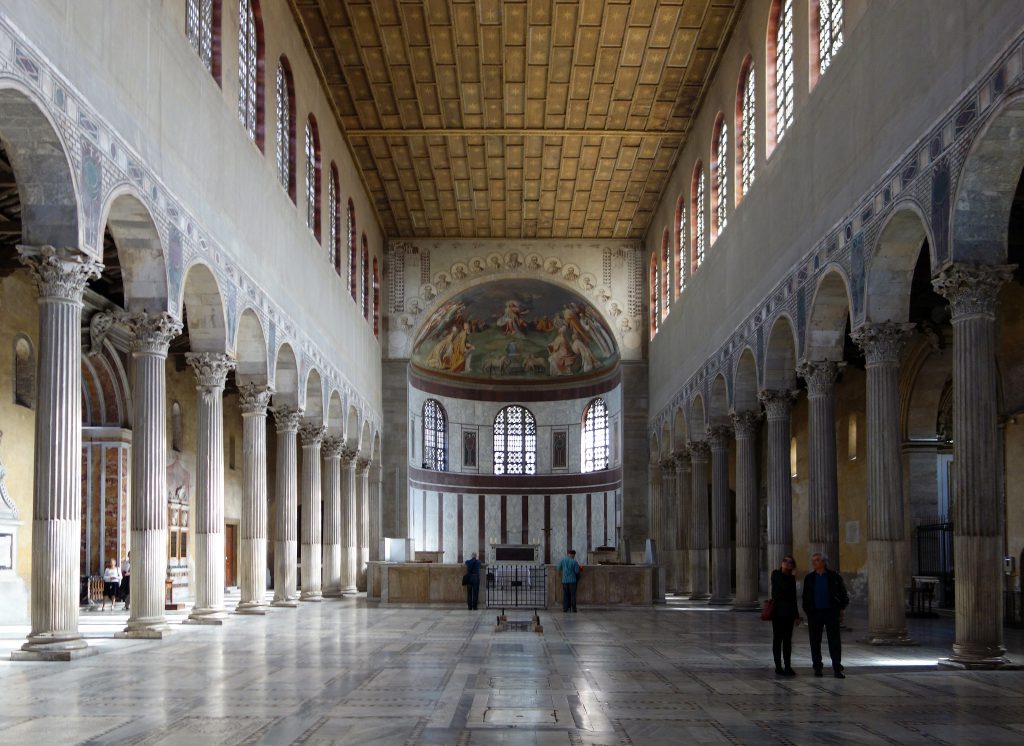
To what extent was the development of Christian art and architecture influenced by the art and architecture of classical Rome? How was it unique?
The development of Christian art and architecture was heavily influenced by the art and architecture of classical Rome. The early Christians in Rome were surrounded by the grandeur and magnificence of Roman architecture, such as the Colosseum and the Pantheon. They saw the potential of using these architectural styles and techniques to create spaces that would be conducive to their religious practices and beliefs. As a result, many early Christian churches were built in a similar style to Roman basilicas, with a rectangular plan, an apse at one end, and a nave flanked by aisles. The use of columns and arches, which were characteristic of Roman architecture, also became prominent features in early Christian buildings (Farber, n.d.).
One example of the influence of Roman architecture on early Christian art and architecture is the Basilica of Santa Sabina in Rome. Built in the 5th century, it features a long nave with side aisles, supported by columns and arches (Spanwick, n.d.). The use of these architectural elements is reminiscent of Roman basilicas, but the interior of Santa Sabina is decorated with Christian symbols and images, such as the Good Shepherd and scenes from the Old and New Testaments. This blending of Roman architectural forms with Christian imagery is a clear indication of the influence that classical Rome had on early Christian art and architecture.
However, while the development of Christian art and architecture was influenced by classical Rome, it also had its unique characteristics. One of the most significant differences between the two is the shift in focus from the secular to the spiritual. Classical Roman art and architecture were often used to glorify emperors and celebrate worldly achievements, whereas Christian art and architecture were intended to convey religious messages and inspire devotion. This can be seen in the use of Christian symbols and imagery in early Christian art, such as the cross and the fish, which were not present in classical Roman art.
Another unique aspect of Christian art and architecture is the emphasis on narrative (Farber, n.d.). Early Christian art often depicted scenes from the Bible, such as the Nativity and the Crucifixion, in order to educate and inspire believers. This focus on storytelling through art was not as prevalent in classical Roman art, which tended to prioritize aesthetics and realism.
Furthermore, Christian art and architecture also incorporated elements from other cultures and traditions. For example, the use of mosaics, which became a prominent feature in Byzantine art and architecture, was influenced by the artistic traditions of the Eastern Mediterranean. The use of these decorative techniques added a unique and distinctive element to Christian art and architecture.
In conclusion, the development of Christian art and architecture was influenced by the art and architecture of classical Rome. Early Christian buildings borrowed architectural styles and techniques from Roman basilicas, such as the use of columns and arches. However, Christian art and architecture also had its unique characteristics, such as the focus on spirituality and narrative storytelling. Additionally, it incorporated elements from other cultures and traditions, adding to its distinctiveness. The blending of classical Roman influences with Christian symbolism and imagery resulted in a new form of art and architecture that served the needs of the growing Christian community.
References
Farber, A. (n.d.). Early Christian Art. Khan Academy. https://www.khanacademy.org/humanities/medieval-world/early-christian-art/beginners-guide-early-christian-art/a/early-christian-art
Spanswick, V. (n.d.). Medieval churches: Sources and forms. Khan Academy. https://www.khanacademy.org/humanities/medieval-world/romanesque-art/beginners-guide-romanesque/a/medieval-churches-sources-and-forms
